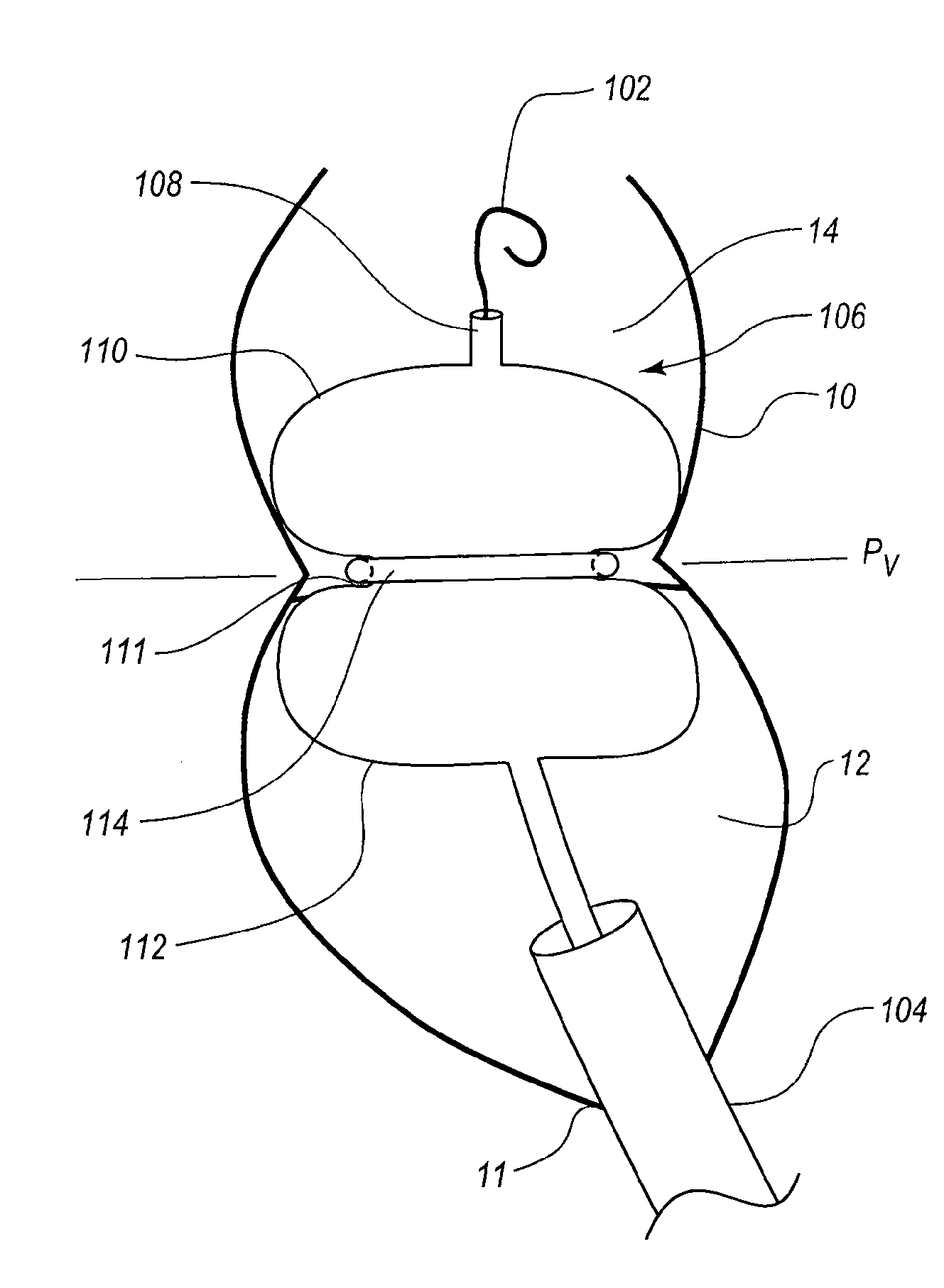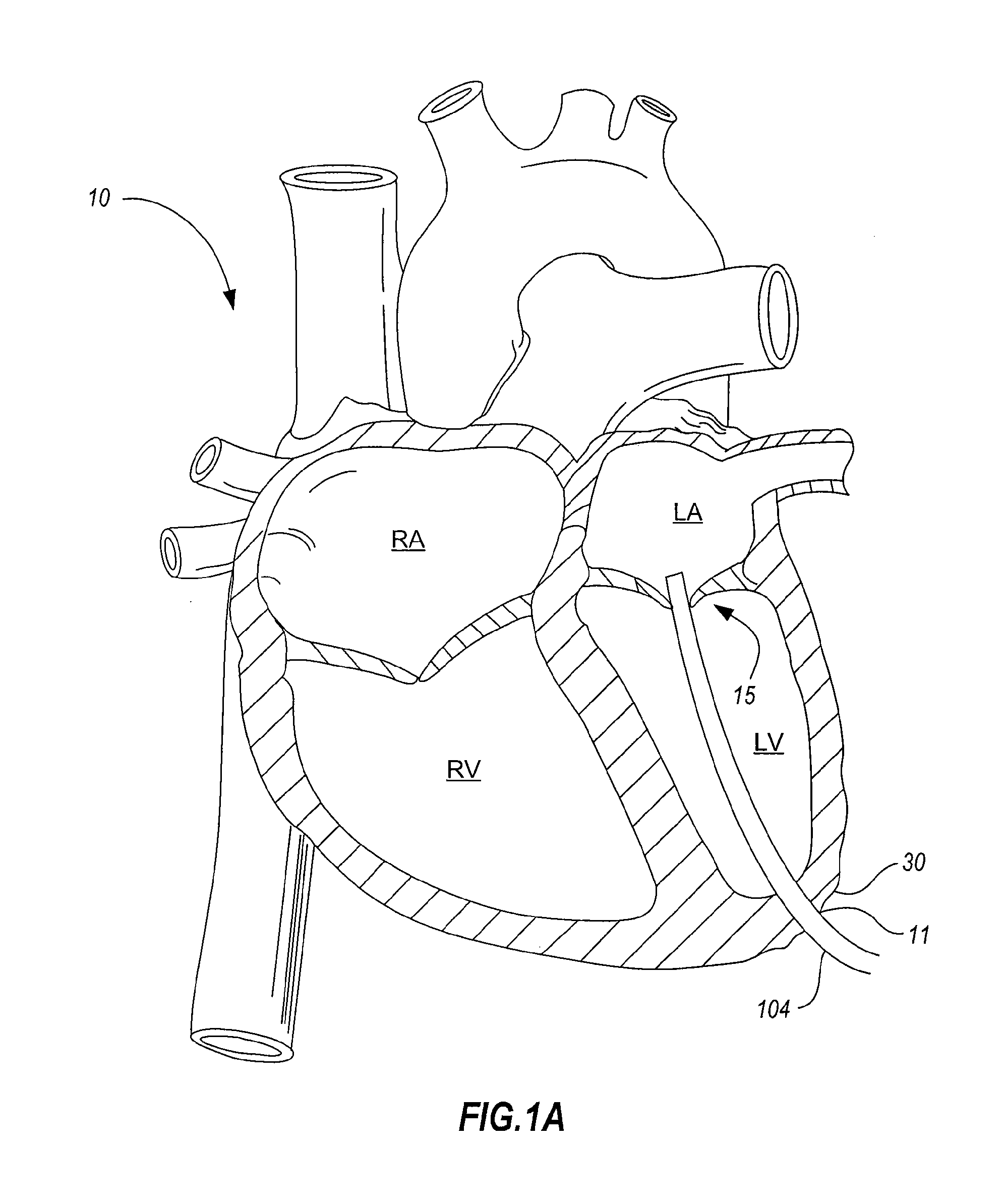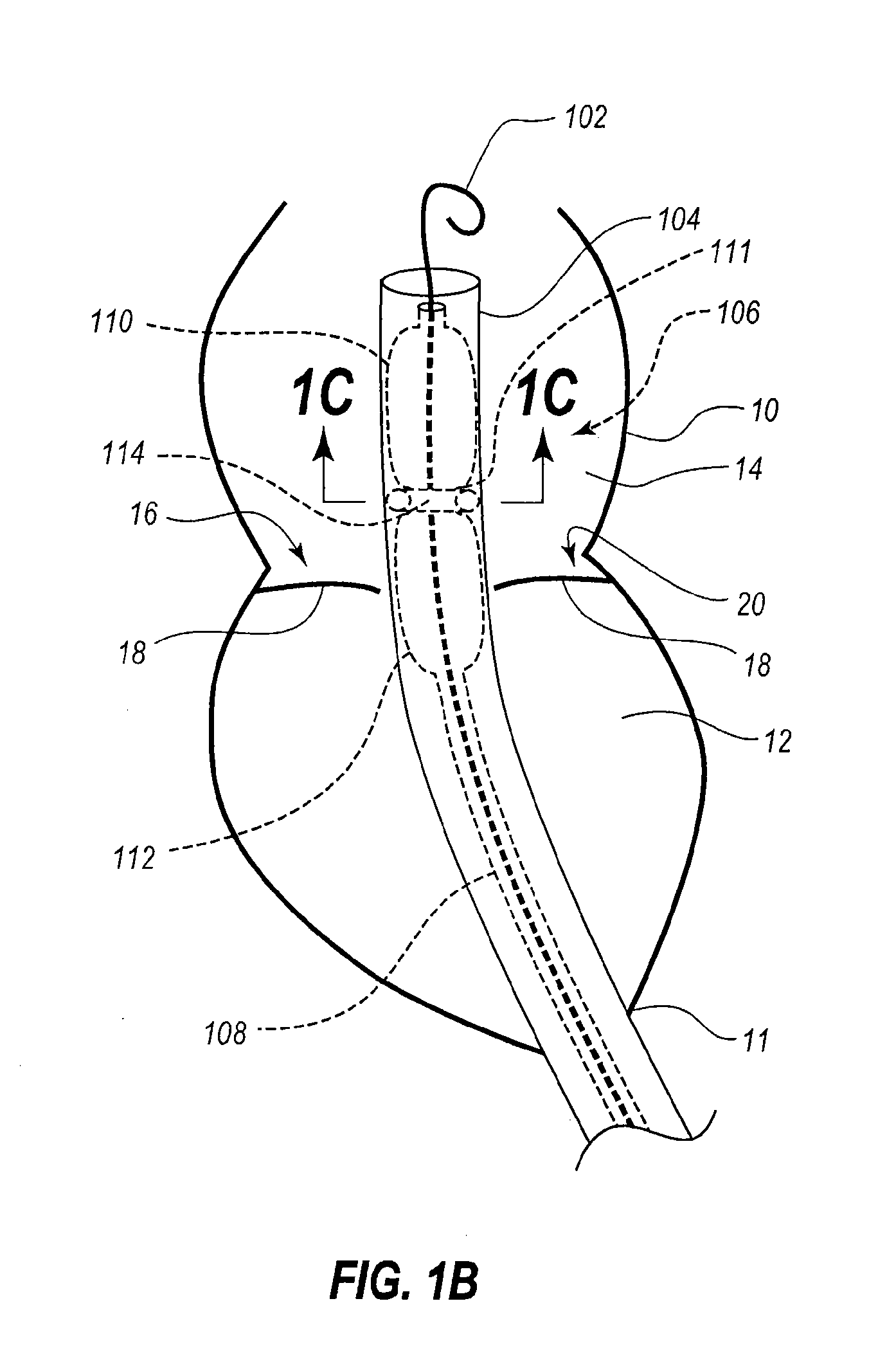Percutaneous transcatheter repair of heart valves via trans-apical access
a technology of transcatheter and heart valve, which is applied in the field of treating and repairing heart valves, can solve the problems of long and difficult recovery, preventing the valve from sealing properly, and affecting the recovery of patients in less than optimal health
- Summary
- Abstract
- Description
- Claims
- Application Information
AI Technical Summary
Benefits of technology
Problems solved by technology
Method used
Image
Examples
example anchor
[0070 Deployment Mechanism
[0071]FIG. 10 illustrates an annuloplasty ring anchor deployment system 1000, according to one embodiment. In the illustrated embodiment, the annuloplasty ring 1002 includes a plurality of fish hook shaped, curved anchors 1004. Each of the plurality of anchors 1004 includes a laser hole (not shown), or other eyelet-type opening, on the anchor 1004. A suture 1006 may be coupled to the laser hole of each of the anchors 1004. The sutures 1006 may be formed of, for example, nylon, prolene, or the like. The plurality of sutures 1006 coupled to the laser hole may pass through the guiding sheath and out of the patient's body where they can be manipulated by a practitioner. For example, the practitioner may be able to pull the sutures 1006 to deploy the anchors and / or to drive the tips of the anchors into tissue.
[0072]A knot pusher 1008 may be disposed on the sutures 1006 to knot and cut the sutures 1006 once the anchors are deployed. With the annuloplasty ring for...
example ring
[0108 Embodiments with Linear Anchors
[0109]FIG. 16A is a schematic diagram illustrating a perspective view of a segmented annuloplasty ring 1600 including a plurality of linear anchors 1610 according to one embodiment. Seven linear anchors 1610 are shown. However, artisans will understand from the disclosure herein that more linear anchors 1610 or fewer linear anchors may be used. For example, certain embodiments may use ten or more linear anchors 1610.
[0110]The segmented annuloplasty ring 1600 includes a plurality of segments 1612 at least partially cut into a shape memory hypotube that forms a “D-shape” in the annular operable geometry (e.g., when implanted around the annulus) and may be compressed into a compressed delivery geometry for implanting the ring 1600 within a patient's heart through a catheter. As discussed above with respect to FIG. 11, the ring 1600 may also include a ring closure lock 1614 (shown in a connected or locked position) for snap locking the two ends of th...
PUM
 Login to View More
Login to View More Abstract
Description
Claims
Application Information
 Login to View More
Login to View More - R&D
- Intellectual Property
- Life Sciences
- Materials
- Tech Scout
- Unparalleled Data Quality
- Higher Quality Content
- 60% Fewer Hallucinations
Browse by: Latest US Patents, China's latest patents, Technical Efficacy Thesaurus, Application Domain, Technology Topic, Popular Technical Reports.
© 2025 PatSnap. All rights reserved.Legal|Privacy policy|Modern Slavery Act Transparency Statement|Sitemap|About US| Contact US: help@patsnap.com



